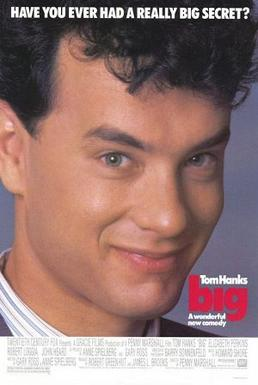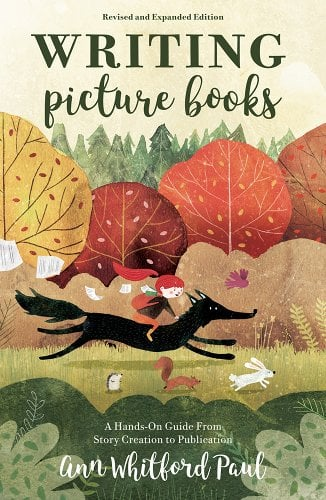Is My Picture Book Ready? Final Checklist:☐Did
you keep your story’s theme/ “aboutness” present and alive in the beginning,
middle, and end? Name what your story is about________________________
☐If you
are writing about a character, do you have reasons for readers to identify with
the character (will readers root for this character because of sympathy,
empathy, likability, competency, super-power quality)?
☐Is this
story for a child?
☐ Is
there a placeholder for the child’s emotions?
☐Is
there a hook and is the hook compelling (this applies to both journey stories
and concept books – remember a concept book is an “early learning concept” like
the alphabet, shapes, colors, numbers, seasons, days of the week, etc.)?
☐ Is
there a reason for the reader to become invested during early pages?
☐ If
your story has a character, is the reader able to track the character’s
emotions/how the character feels during the story?
☐If you
are writing a hero’s journey, do you have a clear reason why TODAY is the day
that sends the hero on the journey? Why must the story question or story
problem be answered TODAY of all days? _________________________________ If you
can’t answer this, your readers might ask, “So what? Why does any of this
matter right now? Why not just do it another day?”
☐Is
there a clear goal?
☐Are
there meaningful stakes (what is at risk or what happens if the protagonist
doesn’t achieve their goal)?
☐Is there
room for a ticking timeclock in your story; and if so, have you used it to the
best of your abilities?
☐Are
you bringing a new and vibrant angle to a story that has been told before? If
you are
creating a concept book or journey, what fresh and new ways are you
adding to the conversation? ______________________________________
☐If
you are creating a concept book or a journey, is there a piece of YOU that you
can uniquely bring to this story?
☐(Journey
and Concept) Does this story have BOTH meaning and music (a captivating,
meaningful story told with fresh and delightful words) such that the reader wants
to open this book a second, third, and fourth time?
☐Do the
verbs in your story match the vibes you are trying to create (if not, upgrade
those verbs)?
☐ Is your
story a piece of theater that the reader can perform for the child? Does your
story have performance quality for the read aloud (e.g., pace + important page
turn moments matched with gorgeous language or funny language or rhythmic or
musical language or onomatopoeia or something else)?
☐Do
you have rising action and/or rising tension or an escalation?
☐Did
you reach a clear midpoint in the story and at the right pace?
☐Did
you delete all darlings? “Darling” words/lines
or “darling” characters are ones that if deleted, nothing about the story would
change. *Note – a darling might be something taking up too much real estate in
your story without contributing as a “foil” or to the aboutness, story beat,
emotional state, character reveal and reason to root, stakes, goal, or rising
tension. A darling might also be something that takes your readers down an
unintended different path.
☐Have
you checked the pace of your story by making a pb dummy? My favorite picture book dummy templates are provided for FREE by author/illustrator Debbi Ridpath Ohi.
Here is Debbie Ridpath Ohi's link to her Free Dummy Templates.
☐After
you make your dummy have you searched for ways to be more concise?
☐Have
you successfully included more “showing” moments than “telling” moments? Have
you made decisions around each moment to note if it is best to show, tell, or
show and tell?
☐Have
you highlighted your manuscript to see if you have a good balance of action +
dialogue? You can track more than that, too; you might see if you have too much
exposition and if so, consider how you might transform some of it into action
and dialogue.
☐Have
you searched “to be” verbs (am/ is/ are/ was/ were) to see if you can upgrade some
of these into action verbs?
☐ Did you
choose strong and fresh verbs (yes – so many checkboxes around verbs, and that’s
not an accident. That’s to show how important they are)?
☐ Did you
delete any unnecessary intensifiers or filler words (just, always,
usually, very, etc.) – the key is “unnecessary”. If the word goes away and
nothing changes, you don’t need it.
☐ Have
you considered each time you say “began” or “started” and considered deleting.
Try the sentence without that hesitation word (for example, I began to run vs.
I ran; I started to rush up the stairs vs. I bolted up the stairs) and see if
you achieve the same vibe.
☐Does
your protagonist or narrator have a flaw and/or would the story benefit if your
character was flawed or slightly flawed (know-it-all, persnickety, bossy, nosy,
stubborn, grumpy, selfish, proud, braggy, miserly, spendthrift, lacks
boundaries, etc.)?
☐
Do you have the right narrator and/or the right protagonist?
☐
Have you considered your story in a variety of ways (1st person,
second person, 3rd person, prose, verse) to make sure you have the
best vehicle for this story?
☐ If you
are choosing rhyme, have you made sure to avoid “Yoda-speak” and/or awkward
sentences. Delete anything that sounds forced or backwards for the sake of
rhyme –aka make sure you don’t have forced rhyme. The must be the star of the
book over the rhyme.
☐ If you
are choosing rhyme, have you tried a scansion test to track if your
rhythm/meters are on pointed your story?
Here is a link on what is scancion and "how to scansion" from Master Class.
☐For
any story - is each sentence the right length for the moment? Make sure you
aren’t cramming several ideas into one sentence. Avoid overly long sentences,
especially at the beginning when a reader is just discovering the story – try
your best not to go past 17 words in a sentence unless there is a compelling
reason to do so (e.g., perhaps a long sentence is purposeful to add to the
mood, energy, comedy, hysteria, or character’s personality).
☐Are
you (mostly) using invisible tags over effusive dialogue tags? Would the
characters
shine brighter and the story flow smoother if the tags become invisible
- e.g., he said/she said/they said (these are called “invisible tags”). Most
writing advice says invisible tags are the way to go – sure, you can do
something different occasionally; but if you do it on every page, it might
weigh down your story.
☐Are you
making sure to delete stage directions that can be left to the illustrator? A
stage direction can be a wasteful use of storytelling text (and you only have a
500-word budget). An example might be something
like, “Madeline opened the door, walked down the hall, and turned left.” You
don’t have to say this since the illustrations will orient the reader. Delete a
stage direction when it doesn’t add any meaning or music to the scene,
character reveal, plot, or theme enhancements.
☐Are you making
sure to hold on to a stage direction when it adds to the pace and delight of
the read aloud performance (e.g., slowing down the pace and stretching it out
in a dramatic moment).
☐ Are you
leaving space for the illustrator to be creative?
☐ Can you
delete any or all illustration notes? Trust illustrators to their craft and try
not to step in their lane.
☐ Are you making
sure that your story can be enjoyed and understood even by the most active child
who is listening in the back of the library or classroom during story time? (Yes
– it’s important to have space for the illustrator, but don’t let the pendulum swing
too hard. It is also important that the text captivates, connects, and engages
the listener).
☐ Are you
trusting your reader rather than overwriting? Remember, a picture book is a
balance of the writer, the illustrator, and the readers – each bring something
to the experience.
☐Have
you tracked your transitions (concept and journey stories)? Take another look
and see if you are using the best transitions possible to thread moments
together (bridges) that flow naturally while still shining a light on the
trajectory of your story’s aboutness?
☐ Have you searched for moments when the exposition
can be better delivered through dialogue instead?
☐
Is your character in agency – driving the plot and or affecting the world
around them (journey story).
☐Is
the aboutness present in Act I?
☐Is
the aboutness present in Act II and is your break into act ii a “squeeze the toothpaste”
moment?
☐Is
the aboutness present in Act III?
☐Are
you leaving space for the reader’s brain to work such that you are not
delivering a story that is that is too “on the nose”? 😊Discoveries
and engagement are parts of reading enjoyment.
☐Did
you avoid being didactic, lesson-y and/or preachy?
☐Is
the emotional state at the beginning of the story different than at the end of
the story (the situation or the protagonist in a journey story; the sense of
wow or awe or knowledge at the end of a concept book)?
☐Have you avoided unsatisfactory repeating
(this is different than poetic and purposeful
repeating)? Go line-by-line (or
perhaps paragraph by paragraph) and ask yourself if the line/paragraph achieves
any of the following. Does it:






































